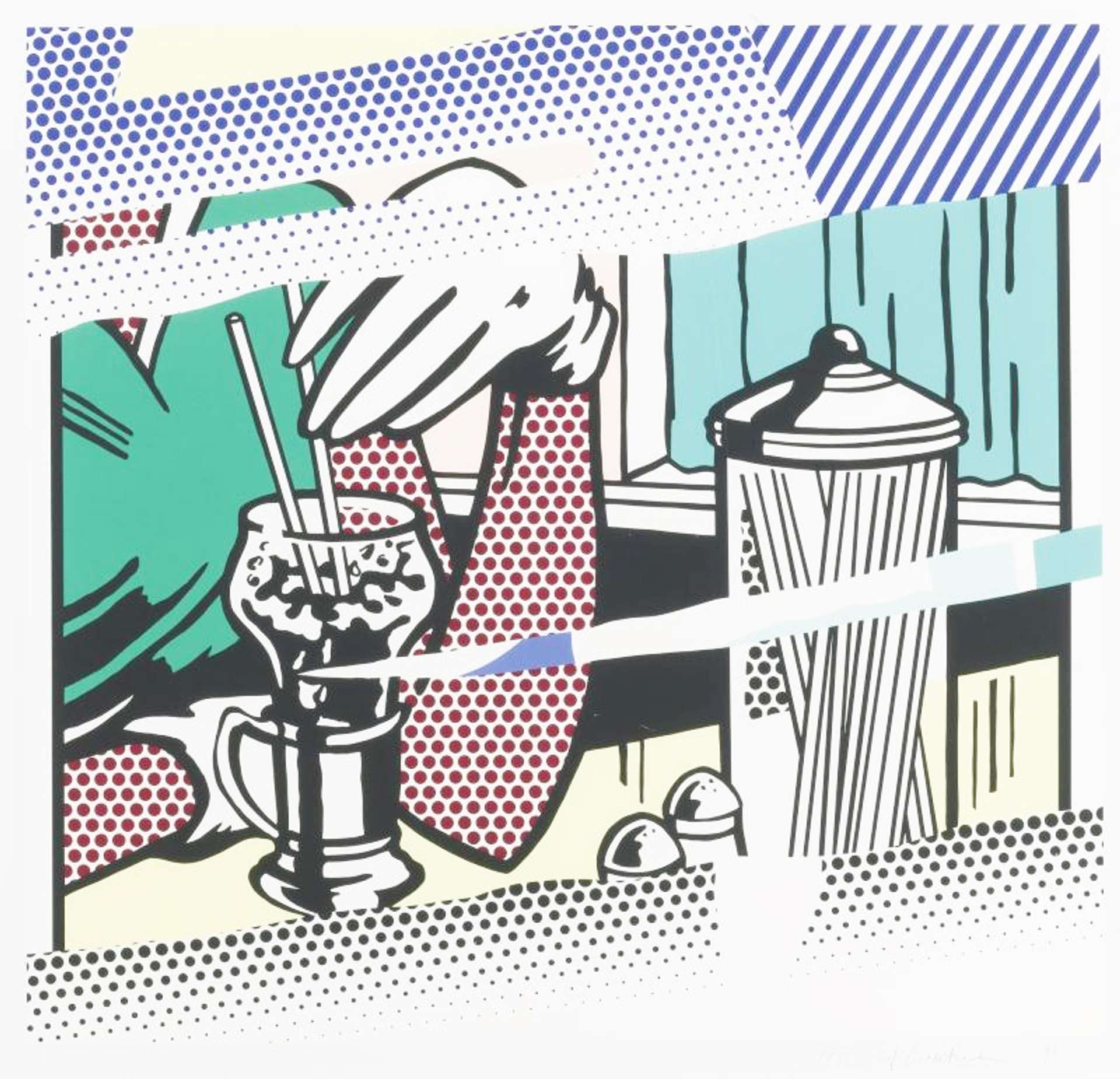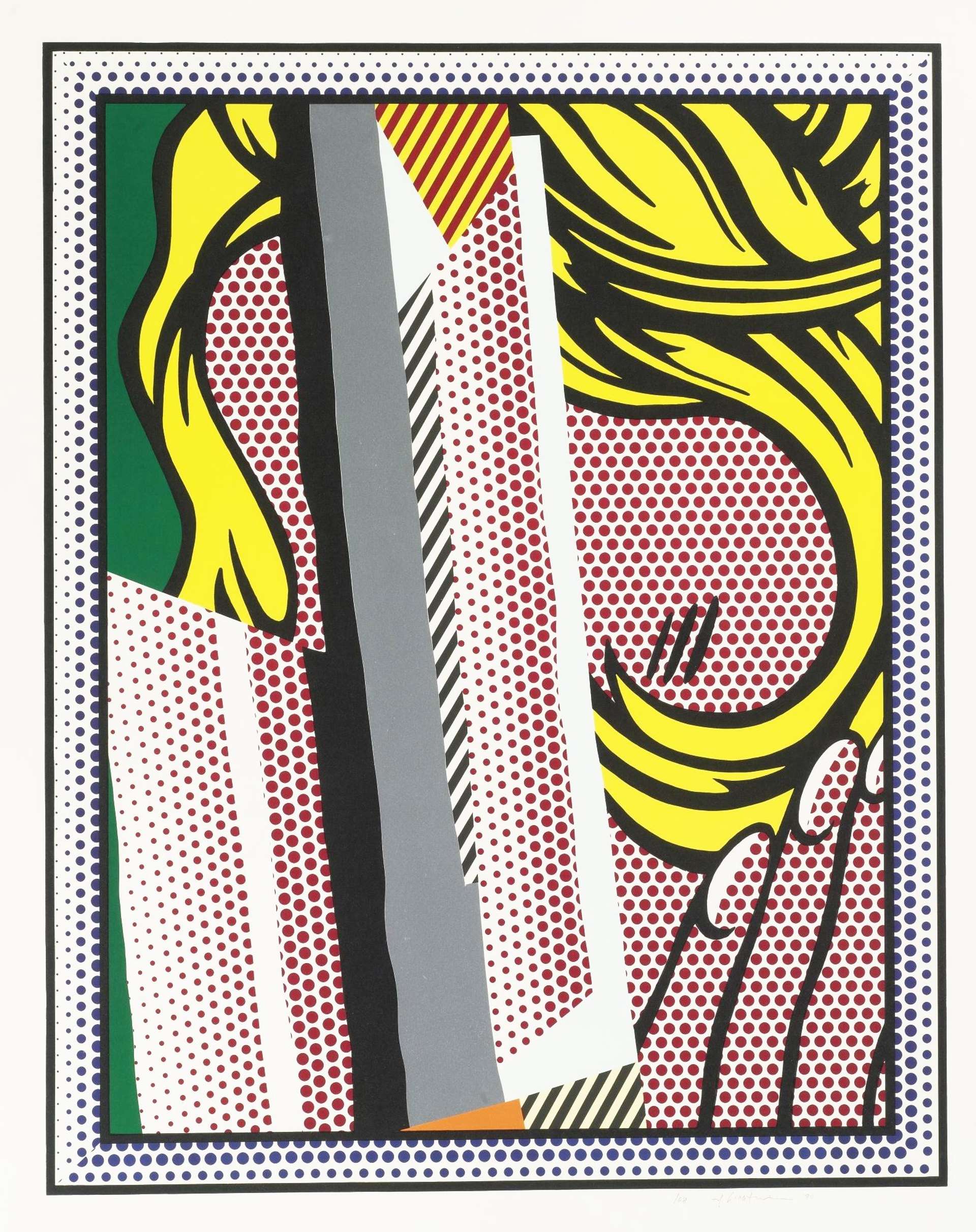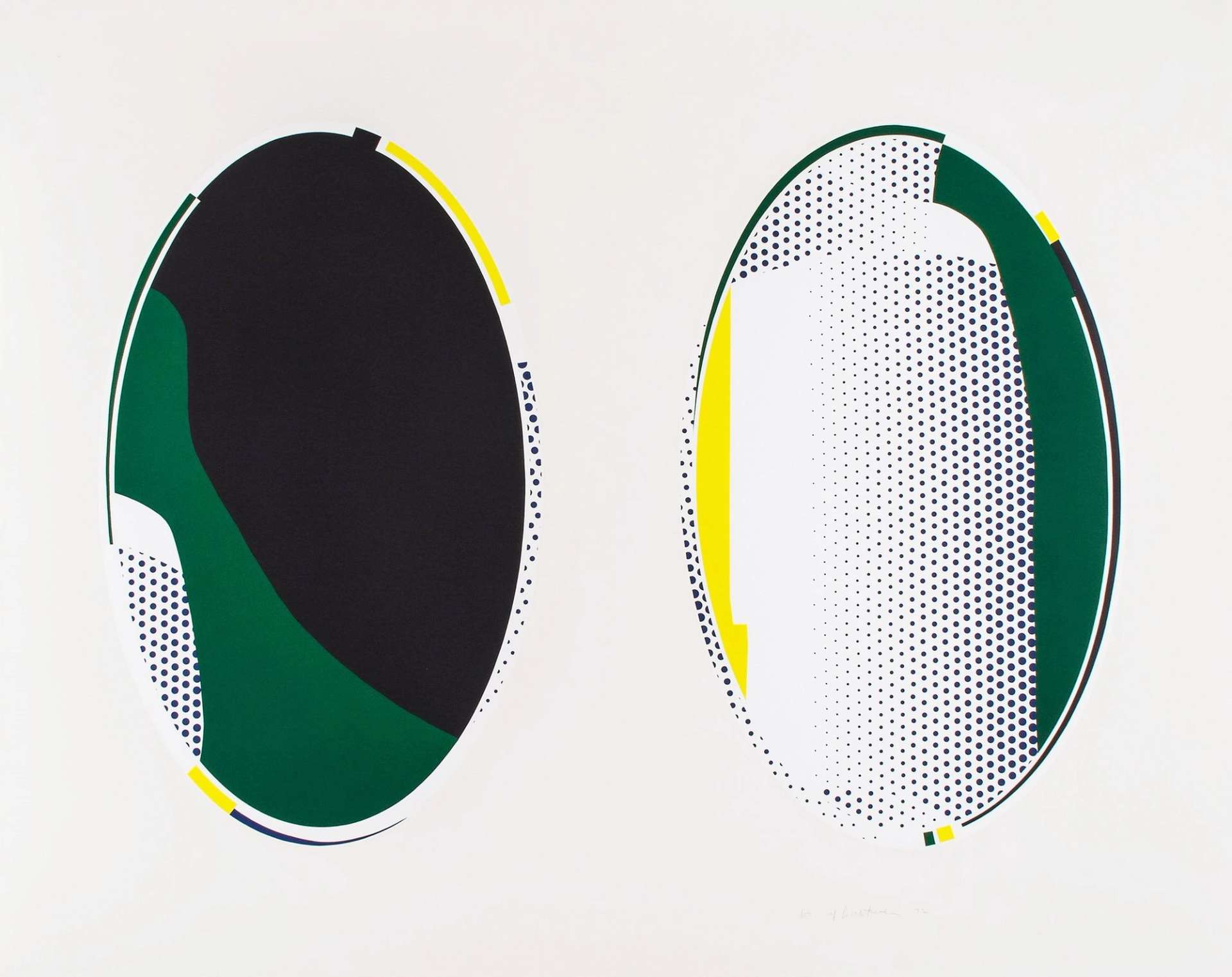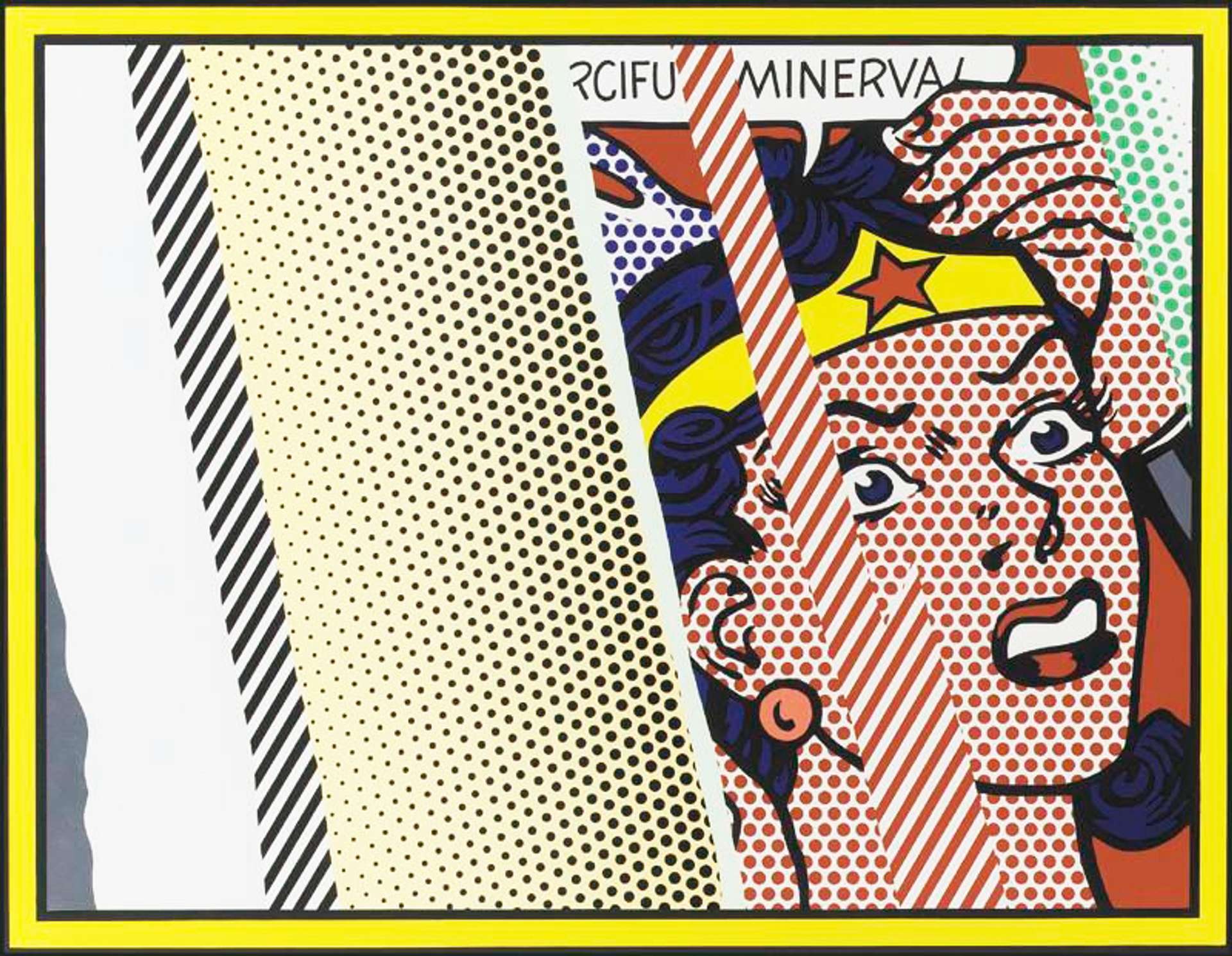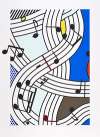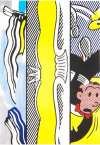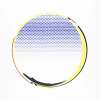Reflections
The Reflections series was completed in the early 1990s and shows several of Roy Lichtenstein's recurrent subjects, disrupted by harsh lines and superimposed pictorial planes suggesting the subject is viewed through a glass plane. Lichtenstein challenges the traditional conception of accurate representation with the contingency of real-life vision.
Roy Lichtenstein Reflections for sale

£50,000-£80,000
$100,000-$150,000 Value Indicator
$90,000-$140,000 Value Indicator
¥460,000-¥730,000 Value Indicator
€60,000-€90,000 Value Indicator
$500,000-$800,000 Value Indicator
¥9,440,000-¥15,110,000 Value Indicator
$60,000-$100,000 Value Indicator
TradingFloor
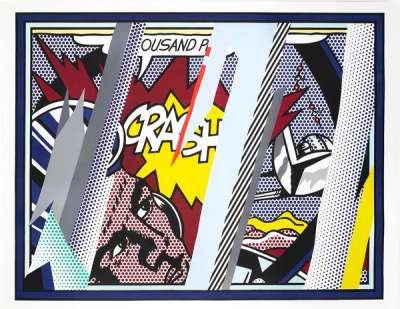
£120,000-£180,000
$230,000-$350,000 Value Indicator
$210,000-$310,000 Value Indicator
¥1,090,000-¥1,640,000 Value Indicator
€140,000-€210,000 Value Indicator
$1,190,000-$1,780,000 Value Indicator
¥22,870,000-¥34,310,000 Value Indicator
$150,000-$230,000 Value Indicator
TradingFloor

£29,000-£45,000
$60,000-$90,000 Value Indicator
$50,000-$80,000 Value Indicator
¥260,000-¥410,000 Value Indicator
€35,000-€50,000 Value Indicator
$280,000-$440,000 Value Indicator
¥5,520,000-¥8,560,000 Value Indicator
$35,000-$60,000 Value Indicator
TradingFloor
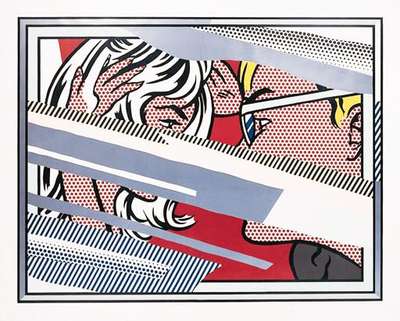
£90,000-£140,000
$170,000-$270,000 Value Indicator
$150,000-$240,000 Value Indicator
¥820,000-¥1,280,000 Value Indicator
€110,000-€160,000 Value Indicator
$890,000-$1,390,000 Value Indicator
¥17,160,000-¥26,690,000 Value Indicator
$110,000-$180,000 Value Indicator
TradingFloor

£60,000-£90,000
$120,000-$180,000 Value Indicator
$100,000-$160,000 Value Indicator
¥550,000-¥820,000 Value Indicator
€70,000-€110,000 Value Indicator
$600,000-$890,000 Value Indicator
¥11,460,000-¥17,200,000 Value Indicator
$80,000-$110,000 Value Indicator
TradingFloor
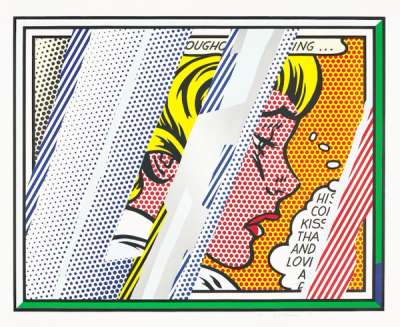
£140,000-£210,000
$270,000-$410,000 Value Indicator
$240,000-$360,000 Value Indicator
¥1,280,000-¥1,910,000 Value Indicator
€160,000-€250,000 Value Indicator
$1,390,000-$2,080,000 Value Indicator
¥26,690,000-¥40,030,000 Value Indicator
$180,000-$270,000 Value Indicator
TradingFloor
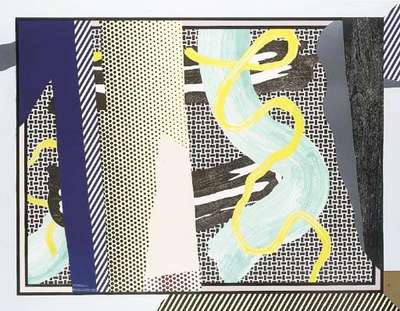
£28,000-£40,000
$50,000-$80,000 Value Indicator
$50,000-$70,000 Value Indicator
¥260,000-¥370,000 Value Indicator
€35,000-€45,000 Value Indicator
$280,000-$400,000 Value Indicator
¥5,320,000-¥7,600,000 Value Indicator
$35,000-$50,000 Value Indicator
TradingFloor
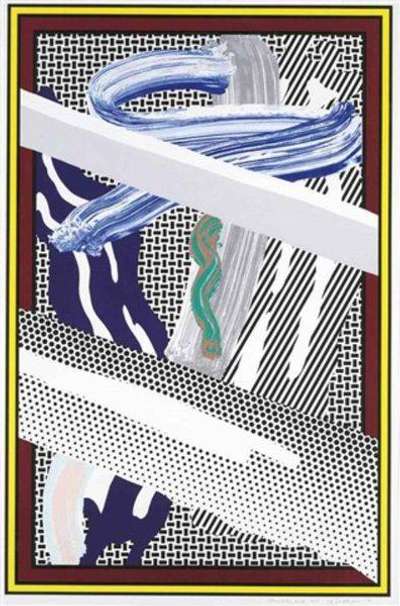
£25,000-£35,000
$50,000-$70,000 Value Indicator
$45,000-$60,000 Value Indicator
¥230,000-¥320,000 Value Indicator
€29,000-€40,000 Value Indicator
$250,000-$350,000 Value Indicator
¥4,750,000-¥6,650,000 Value Indicator
$30,000-$45,000 Value Indicator
TradingFloor
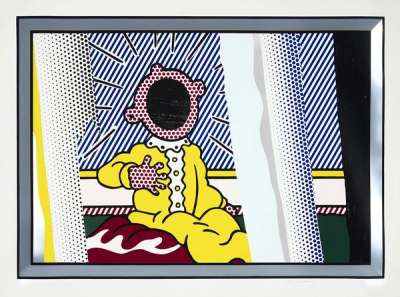
£90,000-£130,000
$170,000-$250,000 Value Indicator
$160,000-$220,000 Value Indicator
¥830,000-¥1,190,000 Value Indicator
€110,000-€150,000 Value Indicator
$900,000-$1,300,000 Value Indicator
¥17,090,000-¥24,690,000 Value Indicator
$110,000-$170,000 Value Indicator
TradingFloor
Sell Your Art
with Us
with Us
Join Our Network of Collectors. Buy, Sell and Track Demand
Meaning & Analysis
Looking at light and perception, the elaborate Reflections series is a distinctive example of the artist’s tendency to reconcile contrastive visuals. His devotion to the stylised language of advertising and the intricacies of printmaking revolutionised the art scene of the 1960s. Lichtenstein continued to re-envision the means of modern painting and classical art until his passing in 1997. The artist’s enlarged and reframed cartoon icons remain influential to this day.
The elaborate Reflections series was completed in the early 1990s. The sequence is a distinctive example of the artist’s tendency to reconcile contrastive visuals. As opposed to a simple concept of ‘theme and variation’, the Reflections represent innovative ideas of light and perception. The artist previously explored these topics in his Mirrors and Water Lilies of the late 1980s.
In keeping with Lichtenstein’s pop practice, the Reflections combine traditional painterly gestures with the detached manner of commercial imagery. Similar to Paintings of the mid-1980s, the main objective of this series is to challenge the notion of artistic originality.
Harsh lines cut across these canvases and result in superimposed pictorial planes, creating a dual sense of depth and flatness. With this deceptive play on vision and dimension, Lichtenstein challenges conventions of creating and seeing. In this regard, the series is comparable to the artist’s Haystacks and Cathedrals of the early 1970s.
Each one of the Reflections prints references Lichtenstein’s own motifs from his emblematic oeuvre. The sequence sabotages the artist’s popular figures and stories by seemingly depicting them through a glass lens. As such, Lichtenstein’s notorious blonde heroine and explosive war scenes appear behind imposing streaks that sever the portraits. The narratives are interrupted and blocked, leaving the beholder to decipher the subject matter beneath.
Even Lichtenstein’s brushwork parodies are included in this series. These works in particular ridicule the artistic legacies of Abstract Expressionism by allowing the splintered shards to encroach the energetic sweeps on the surface. The partly hidden figurative images are altered and obscured by fractions of unmodulated pigments and patterns, pushing them to the point of abstraction. The reduced characters are glimpsed between sharp mirrored shapes that break and refract the picture plane. In doing so, the works reinvent their source material into a graphic composition of reflections that resembles a fragmented and disjointed collage.
